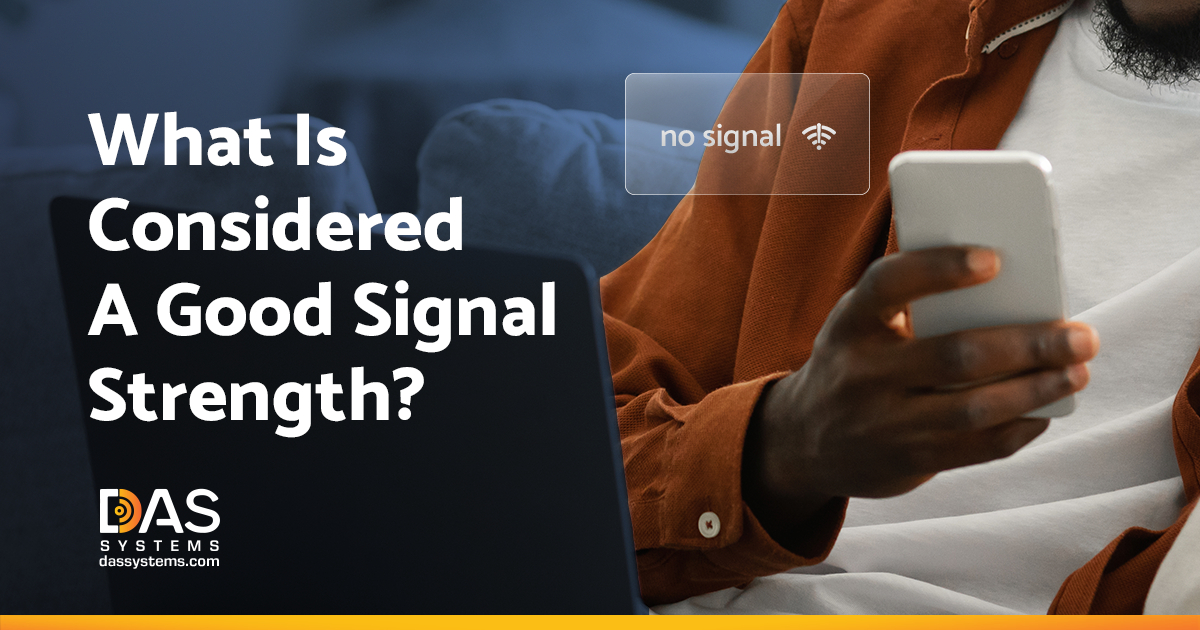What Is Considered A Good Signal Strength?
We’ve all experienced lousy reception in certain areas and sections of a building or structure. It’s considered a significant cause of frustration for current tenants while deterring future tenants from being attracted to the building.
But let’s dive deeper into this frustrating phenomenon to understand what’s happening on the technical side.
What is Signal Strength?
To understand signal strength, it’s essential first to understand the concept of radio frequency (RF). Radiofrequency is a form of electromagnetic radiation transmitted via antennas and cables.
Devices use this form of energy to communicate with one another. The RF spectrum includes everything from AM/FM radio waves to microwaves used by mobile phones and Wi-Fi routers.
An individual device will have a specified range of transmitting signals. This range falls within the definition of “good” or “bad” signal strength based on how reliable and accurate any given device needs its data to be for it to work effectively at all times.
While this may seem obvious, many factors impact how effective your cellular service provider’s network might be outside your home or office building.
Weather conditions such as rainstorms or snowstorms can impact cell towers; even something as simple as construction near an existing tower site could cause interference from other wireless signals being broadcast nearby (or vice versa).
What Qualifies A Good Or Bad Signal Strength
Signal strength is the amount of power transmitted over a given distance. It’s measured in dBm (decibels relative to 1 milliwatt), with higher numbers indicating better signal strength and vice versa.
Signal strength is affected by obstructions, distance, and the number of wireless devices used. A good signal strength should be approximately between -50 dBm to -25 dBm on a cellular device.
The Effects of Signal Strength
Poor signal strength can affect workplace efficiency in several ways. For example, you may experience slow mobile Internet speeds or have trouble making or receiving calls. This is especially true if you’re in an area with poor reception, such as a basement or underground parking garage.
Poor signal strength can also affect occupant safety: it could prevent people from receiving warning notifications about potential hazards (such as fire alarms), which could cause them to leave their workspace too soon or not evacuate.
It can also disrupt medical equipment workers with disabilities and make it challenging to communicate with emergency responders if necessary (for example, during an active shooter situation).
Poor signal strength can also impact public safety and other commercial wireless communications. For example, police officers may be unable to access real-time data from their body cameras during emergencies.
Firefighters may need to receive information about dangerous chemicals stored at nearby businesses. Construction workers might work on unsafe bridges because they need to learn that government inspectors recently inspected the bridge.
Good Signal Strength For Public Safety
Regarding public safety and other commercial wireless communications, a reasonable signal strength requirement provides minimal latency, low packet loss, good voice quality, low jitter, and high throughput. Good coverage is also crucial so that the system will work in areas of high demand or remote locations where there may not be any other options available.
You’ll need to balance power consumption with coverage capabilities and capacity requirements to achieve this goal. For example, suppose you want your system to cover an area with poor reception. In that case, you may need higher transmission power than if your system operates at an airport or stadium where there’s no interference from surrounding buildings or trees.
These factors can decrease the range of signals traveling over longer distances due to absorption by objects such as concrete walls or tall trees.
How Does Cellular DAS Ensure Good Signal Strength?
Its design is one of the essential factors in ensuring that a Cellular DAS system provides good signal strength. Every location where a DAS is installed has its unique set of challenges, and it’s crucial to have an experienced designer who can bring together all of these elements to create a solution that works well for your specific location.
In addition, there are many ways to increase this type of system’s impact on overall cell phone connectivity. For example:
If you’re using multiple providers, it’s vital to ensure that each provider has the bandwidth they need to provide quality service. You should also consider adding nodes or repeaters if you want more coverage or throughput capacity than what one node offers by itself.
The Importance of Good Signal Strength
Good signal strength is significant for your in-building wireless system. The higher your signal strength, the more reliable connections will be and the better it will perform.
A strong signal means you can move around freely without losing connectivity or experiencing dropped calls. In addition to ensuring that your employees can connect and their devices, a strong signal also ensures that they do so safely by providing them with access to vital information about their surroundings.
Poor signal strength can cause problems such as missed deadlines due lack of communication between departments which may result in disciplinary action being taken against them (or worse).
Conclusion
Whether you are trying to increase your coverage and capacity or want to ensure proper connectivity for your business, installing a Cellular DAS is the best way to do this.
It will help you get the most out of your wireless network and ensure that no matter where an employee goes in your building, there will always be good signal strength available for them.





